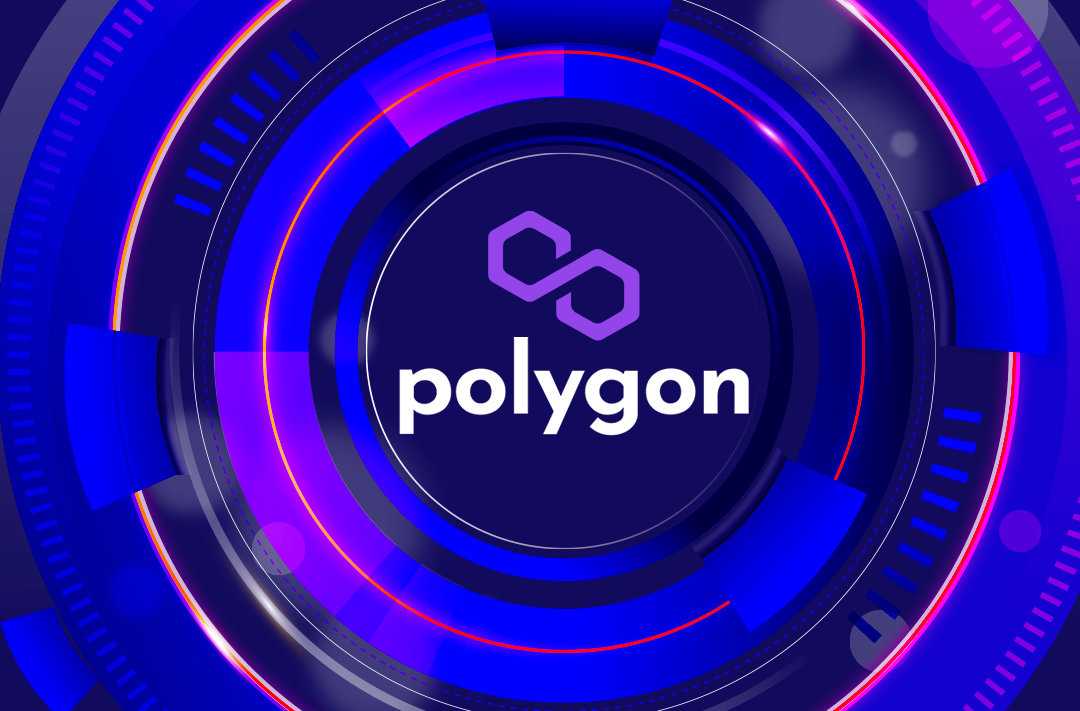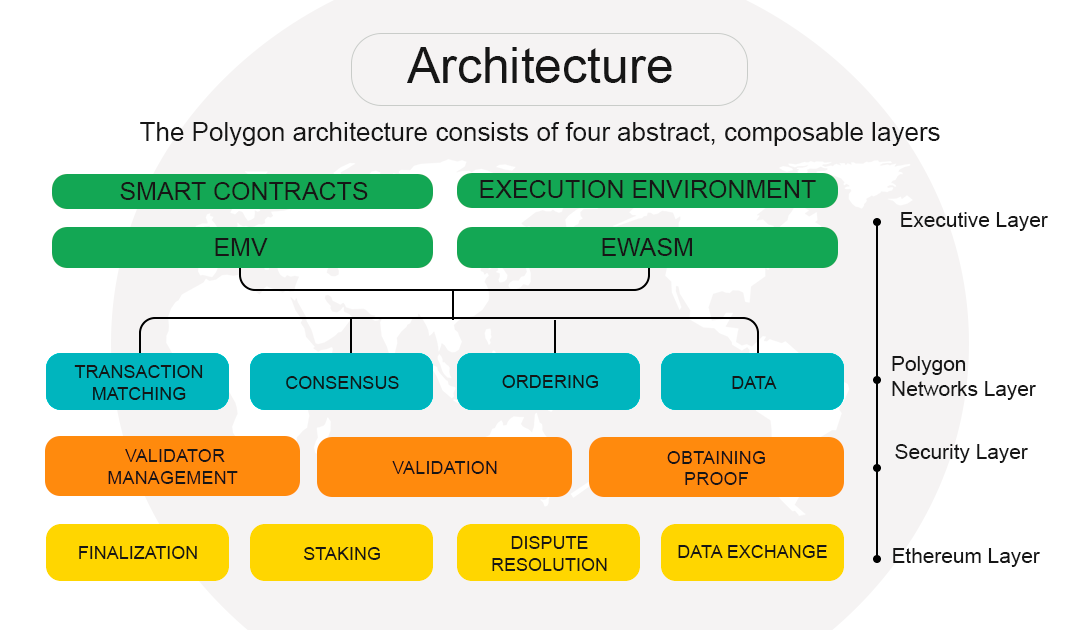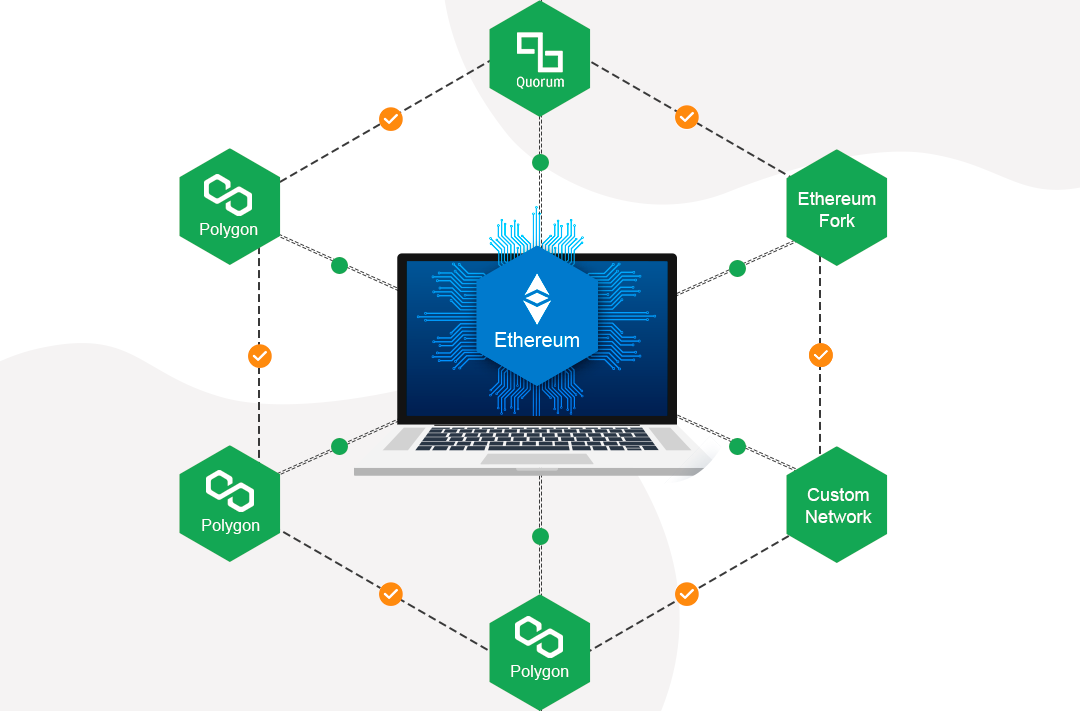What is Polygon
Formerly known as the Matic Network, Polygon is a secure Layer 2 (L2) and sidechain network powered by the Ethereum blockchain

29.11.2021
16232
6 min
86
. Polygon's main goal is to increase Ethereum scalability, reduce network load, reduce transaction fees, and create decentralized financial services (DeFi).

What is Polygon?
Considering all the technological advantages of Ethereum, the blockchain has some serious drawbacks: high fees, insufficient scalability of the platform, inconvenient interface, complicated for ordinary users, a lot of small bugs and errors. While these problems are being solved, market participants are looking for other alternatives. Polygon has become one such alternative.
In brief:
- Polygon is a Layer 2 scaling solution based on Ethereum.
- The Polygon network uses the MATIC token.
- The token has a market capitalization of more than $11 billion as of this writing.
- Polygon aims to create an “Ethereum blockchain internet.”
History of Creation
Polygon was created by a team of blockchain developers from India, including Jainty Kanani (CEO), Sandeep Nailwal (COO), and Anurag Arjun (Product Manager). In December 2020 they were joined by Ethereum specialist Mihajlo Bjelic, after which the project was renamed from Matic to Polygon.
All of them worked in technology firms. Before founding Polygon, the team made a huge contribution to the Ethereum ecosystem. They worked on MVP Plasma (one of the first Layer 2 solutions to reduce network load) and the Dagger notification mechanism in the Ethereum protocol.
Polygon was originally planned as a simple Layer 2 network scaling project for Ethereum, but now it is a whole network of compatible blockchains that somehow maintain their independence.

How Polygon works
Polygon is a second-generation modular platform that developers can use to deploy and configure their own blockchain. It includes consensus and management modules, as well as various runtime environments and virtual machine implementations.
Polygon is a set of “child blockchains”, that is, sidechains that use the Ethereum blockchain as a guarantor of security. Sidechains help reduce the load on the main network by allowing multiple transactions to be grouped together before being sent to the main blockchain. Polygon uses the Proof-of-Stake consensus mechanism.
When studying Polygon, the first thing to understand is that Polygon is actually separate from the original MATIC sidechain running on Ethereum. The new Polygon is built as a commit-chain, and not as a sidechain in the usual sense. The main difference is that sidechains usually rely on their own validators, while Polygon uses Ethereum security systems. Commit chains allow developers to take advantage of sidechains while providing security thanks to Ethereum.
Two different types of chains can be built in the Polygon ecosystem: standalone and protected. Standalone chains can have their own consensus models, such as Proof-Of-Stake or Delegated-Proof-Of-Stake. Such chains are more flexible and independent, but less secure. Protected chains are directly secured by Ethereum, or by the validators in the Polygon ecosystem, making them more reliable, but less flexible and independent. The Polygon network architecture is unique in that it gives developers the ability to combine different scaling functions, rather than choose just one.
Polygon architecture
The Polygon architecture includes four main layers.

Ethereum Layer
This is the base layer in the Polygon chain, which is represented as a set of smart contracts. It is used for the processes of staking, messaging, finalization, and dispute resolution. This layer provides security, but greatly reduces the flexibility and independence of the chain. Polygon-based projects do not need to use this layer.
Security Layer
This layer is also optional. It allows Polygon validators to verify transactions in exchange for rewards. This layer runs parallel to Ethereum and regulates validators. This system is less secure, but it significantly reduces the load on the Ethereum blockchain.
Polygon Networks Layer
This layer is composed of isolated networks, and each can perform central functions such as block production and transaction matching. Every Polygon-based project must build on it.
Executive Layer
The layer is responsible for matching and executing transactions. It consists of sublevels of execution environment and execution logic. The layer is required for each Polygon network.
Validation Mechanism
Many sidechains use a consensus mechanism that limits the number of validators. For example, the Delegated-Proof-Of-Stake (DPoS) model typically has 21 validators that are selected by token holders, and only these validators can verify the state of the blockchain. Similarly, in the Proof-Of-Authority (PoA) model, the transaction initiator selects the conditions to run the chain. This model excludes most participants and creates a situation where only selected nodes are responsible for transaction validation.
In the PoS model, anyone can join the network and start block validation. Validators in Polygon must invest their MATIC tokens in the staking and start a full node. If a validator starts acting maliciously, for example, by double-signing or delaying, their tokens will be blocked. Once the transaction is confirmed by all nodes, tokens from the staking are returned to the owner along with the reward.

Heimdall, Bor, and checkpoints
Heimdall and Bor are the two components of the network layer in the Polygon architecture.
The Heimdall layer is involved in the process of selecting validators, as well as issuing rewards and blocking attacker tokens. In addition, this layer is responsible for creating checkpoints.
The Block Producer Layer (Bor) is responsible for combining transactions into blocks. Block producers are selected and shuffled using a special algorithm of the Heimdall layer. Validators are selected only to confirm a certain “interval” of blocks, once the time has elapsed, the selection begins again.
Heimdall allows blocks created by Bor to be merged into a single Merkle tree and published periodically in the main Ethereum chain. This published state is called a checkpoint, and the process itself is called “checkpointing.” All validators rely on data from the last checkpoint created.
Polygon Development
The Polygon architecture is universal. Thanks to this, many applications can choose the best option for them. Applications can either focus on security or move towards scalability.
The Polygon network already uses about a million addresses, and more than 80 million transactions are carried out in one day. More than 50 digital assets have been released based on the PoS blockchain, including MATIC, Tether USD (USDT), USD Coin (USDC), Quickswap (QUICK), Dai Stablecoin (DAI), Chain Games (CHAIN).
Many other projects are about to migrate or have already migrated to the Polygon system, for example, Decentral Games, SportX, Easyfi, Neon District, 1inch Network, Quickswap, Uniswap, SushiSwap, Aavegotchi, Polymarket, Polkamarkets, and Superfarm.
More and more companies and applications are using Polygon's potential in one way or another. The project is getting big investors, and it ranks 4th in DeFi Pulse in terms of blocked funds.
But Polygon is just an add-on to Ethereum version 1, and the question arises: will it find its use when switching to Ethereum 2.0?
Useful material?
Basics
Why Satoshi Nakamoto’s technical manifesto for a decentralized money system matters
Oct 31, 2022
Basics
Experts evaluated the development prospects of the new ecosystem and the investment attractiveness of its token
Oct 20, 2022
Basics
How to track fluctuations correctly and create an effective income strategy
Sep 13, 2022
Basics
Review of the most profitable offers from proven trading platforms
Aug 29, 2022
Basics
The Ethereum Foundation team has published a breakdown of major misconceptions about the upcoming network upgrade
Aug 18, 2022
Basics
What benefits the exchange offers, and what else is in the near future
Aug 4, 2022









 Telegram
Telegram  Twitter
Twitter